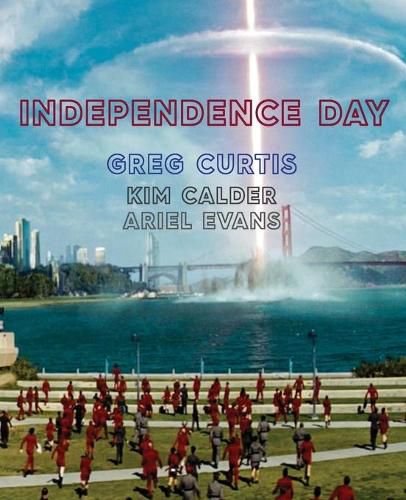Readings Newsletter
Become a Readings Member to make your shopping experience even easier.
Sign in or sign up for free!
You’re not far away from qualifying for FREE standard shipping within Australia
You’ve qualified for FREE standard shipping within Australia
The cart is loading…






This title is printed to order. This book may have been self-published. If so, we cannot guarantee the quality of the content. In the main most books will have gone through the editing process however some may not. We therefore suggest that you be aware of this before ordering this book. If in doubt check either the author or publisher’s details as we are unable to accept any returns unless they are faulty. Please contact us if you have any questions.
Independence Day
© 2018 Greg Curtis, Kim Calder, Ariel Evans
Insert Blanc Press
An asteroid, volcano, tsunami or alien army draws near and the camera cuts away to pan across groups of people looking towards catastrophe. Intermittently montaged amidst the progressing apocalypse, each clip lasts for a few seconds. All peoples in the world–that is the movies’ extras–look up and expect to die; this is all the movie demands its audience to know. These extras work partly like an index finger: they direct us to look at something. They proceed to tell us how to look [unblinkingly] and how to feel [scared, adrenaline-charged].
Greg Curtis pulled stills from such fifteen-or-so-year-old disaster movies. His/this book’s photographs slice still images out of these moving films, to focus on these extras, spectators-of-their-own-deaths. The camera rested on their faces for less than a second in the movies, but Greg’s still slices allow more sustained looks. Main characters embrace each other and their deaths (heroically), but extras run away from ground zero or stare upwards. Extras gaze at the cataclysm with their bodies angled upwards, like your own body when you watch a movie screen. As you look at these extras in the movies, your body echoes theirs in pose. Also you are grouped like them, each of you one of many other bodies.
–Ariel Evans
$9.00 standard shipping within Australia
FREE standard shipping within Australia for orders over $100.00
Express & International shipping calculated at checkout
This title is printed to order. This book may have been self-published. If so, we cannot guarantee the quality of the content. In the main most books will have gone through the editing process however some may not. We therefore suggest that you be aware of this before ordering this book. If in doubt check either the author or publisher’s details as we are unable to accept any returns unless they are faulty. Please contact us if you have any questions.
Independence Day
© 2018 Greg Curtis, Kim Calder, Ariel Evans
Insert Blanc Press
An asteroid, volcano, tsunami or alien army draws near and the camera cuts away to pan across groups of people looking towards catastrophe. Intermittently montaged amidst the progressing apocalypse, each clip lasts for a few seconds. All peoples in the world–that is the movies’ extras–look up and expect to die; this is all the movie demands its audience to know. These extras work partly like an index finger: they direct us to look at something. They proceed to tell us how to look [unblinkingly] and how to feel [scared, adrenaline-charged].
Greg Curtis pulled stills from such fifteen-or-so-year-old disaster movies. His/this book’s photographs slice still images out of these moving films, to focus on these extras, spectators-of-their-own-deaths. The camera rested on their faces for less than a second in the movies, but Greg’s still slices allow more sustained looks. Main characters embrace each other and their deaths (heroically), but extras run away from ground zero or stare upwards. Extras gaze at the cataclysm with their bodies angled upwards, like your own body when you watch a movie screen. As you look at these extras in the movies, your body echoes theirs in pose. Also you are grouped like them, each of you one of many other bodies.
–Ariel Evans